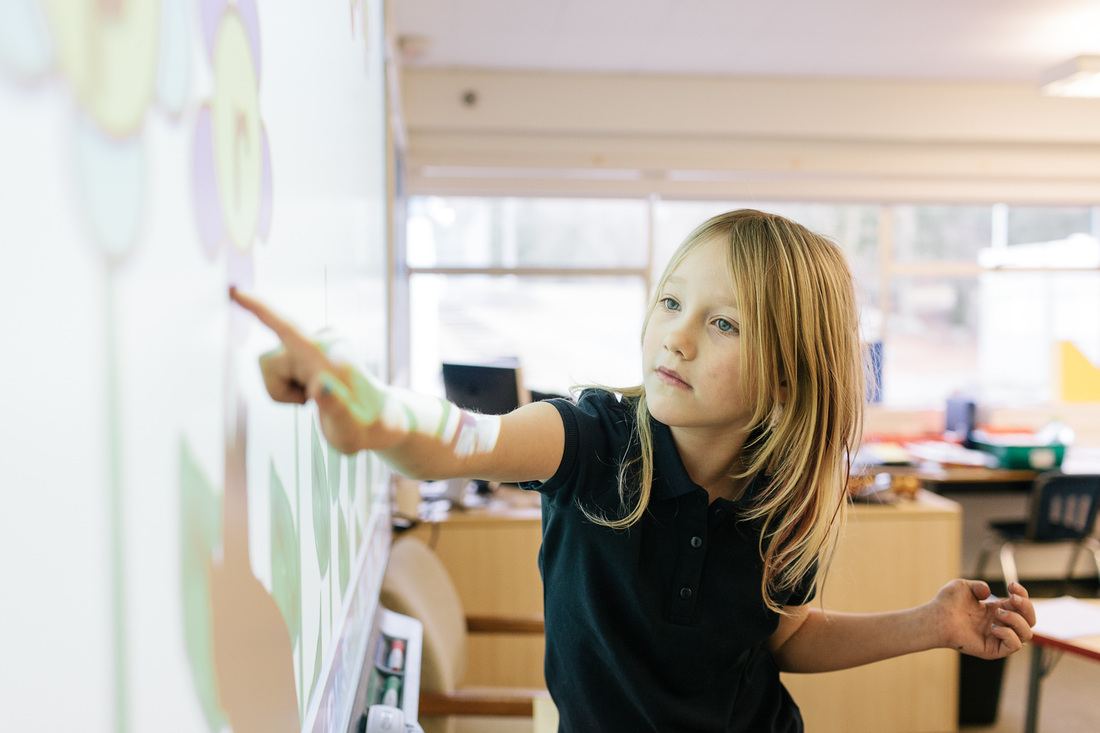
Coming up the middle of this discussion is the approach that we use at KGMS/Maplewood. It is called Universal Design for Learning (UDL). UDL is an educational framework based on research in the learning sciences, including cognitive neuroscience, that guides the development of flexible learning environments that can accommodate individual learning differences. Recognizing that the way individuals learn can be unique, the UDL framework, first defined in the 1990s by the Centre for Applied Special Technology, calls for designing and implementing a curriculum that provides:
- Multiple means of representation to give learners various ways of acquiring information and knowledge,
- Multiple means of expression to provide learners alternatives for demonstrating what they know, and
- Multiple means of engagement to tap into learners' interests, challenge them appropriately, and motivate them to learn.
As the National Center on Universal Design states:
UDL is intended to increase access to learning by reducing physical, cognitive, intellectual, and organizational barriers to learning, as well as other obstacles. UDL principles also lend themselves to implementing inclusionary practices in the classroom...
UDL provides a blueprint for creating instructional goals, methods, materials, and assessments that work for everyone--not a single, one-size-fits-all solution but rather flexible approaches that can be customized and adjusted for individual needs.
In other words, rather than vary our methods from time to time, educators need to offer multiple approaches concurrently. You start with the concept, or the assessment, or the teaching strategy and offer a variety of strategies or options for students to pursue. UDL starts with the premise that everyone is capable of understanding a concept; or demonstrating mastery; or being engaged in learning; the role of the teacher is to find the pathway that will make it work for each of her or his students. For a class novel study for example, that might mean using a combination of a regular print copy; a digital book with adjustable font; an audio-book; or even speech to text software on a laptop or SmartBoard. Additionally, some creative strategies for challenging learners, inspired by a universal design approach, can often prove to be more effective for all students - even those who would normally succeed in a traditional classroom. As has often been noted, automatic doors may have originally been conceived as a device to serve people in wheelchairs (or on starships!) but are now in universal use providing ease of access for parents with strollers, shoppers with packages, or just people in a hurry.
Another area where Universal Design can be critically important is in helping students to develop the skills of self-regulation. Typical schools and classrooms rely on extrinsic motivation (grades, graduation, university entrance requirements;etc.) to get students to attend, learn and even graduate. However "if we want students to understand how they learn, recognize and deal with their emotions in a way that helps them cope and flourish and build intrinsic motivation, then as educators we need to strategically support students and help them develop these skills. While some students learn self-regulation on their own, many more need support and guidance. UDL asks teachers to explicitly teach self-regulation skills. By promoting positive expectations, demonstrating coping strategies and building in self-assessment and reflection, we help students begin to take on the responsibility for recognizing and managing their own emotions, building up a series of strategies to help them become successful, metacognitive learners."
In the second decade of the 21st century, advances in technology have made UDL more practical and more effective at the classroom level. Universal Design, is not about class size or even class composition. Well-resourced schools, with skilled teachers in place, have an excellent chance of meeting the needs of all learners in their care. It's all in their design for learning.


 RSS Feed
RSS Feed
